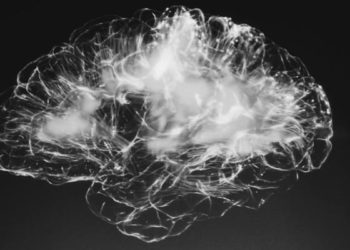2 Minute Medicine Rewind November 28, 2022
1. In patients with isolated distal deep vein thrombosis, administration of rivaroxaban for three-months compared to six-weeks effectively and safely reduces the risk of recurrent venous thromboembolism.
Evidence Rating Level: 1 (Excellent)
Isolated distal deep vein thrombosis (DVT) account for half of all deep vein thromboses. While these are perceived to be more benign in nature than a proximal DVT, distal DVTs may extend to proximal veins or pulmonary arteries if not treated. Despite the high frequency of isolated distal DVTs, the optimal management with anticoagulation therapy and length of treatment remains controversial. In this randomized controlled trial, the efficacy and safety of rivaroxaban for a six-week period compared to a three-month period was assessed. This study randomized 402 participants with symptomatic isolated distal DVT of the legs into either the six-week group or the three-month group. Patients were followed-up for a total of five times until 24 months. The primary outcome of this study was recurrent venous thromboembolism during follow-up after randomization, assessed by ultrasonography at each visit. The primary safety outcome was incidence of major bleeding after randomization. The results of this study showed that recurrent venous thromboembolism during follow-up occurred in 11% of the rivaroxaban group and 19% of the placebo group (RR 0.59 95%CI 0.36-0.95). In patients with recurrent venous thromboembolism, anticoagulant treatment was restarted. Additionally, no major bleeding events occurred after randomization in both groups. In conclusion, in patients who were diagnosed with symptomatic isolated distal DVT receiving treatment with rivaroxaban, a longer duration of anticoagulation significantly reduced the incidence of recurrent venous thromboembolism during the follow-up period. There was no major risk of bleeding with a longer duration of anticoagulation. This study had many strengths including its study design which was double-blinded and randomized. Future studies exploring the association between length of anticoagulation and recurrent venous thromboembolisms in the context of different anticoagulant agents could be valuable.
1. After accounting for parental genetic factors, prenatal benzodiazepine exposure was not associated with an increased risk of autism spectrum or attention-deficit and hyperactivity disorders in children.
Evidence Rating Level: 2 (Good)
Benzodiazepine agents are often used to help improve symptoms of depression and anxiety during pregnancy. However, prenatal exposure to benzodiazepines is thought to be associated with neurodevelopmental disorders in children but research investigating autism spectrum (ASD) and attention-deficit and hyperactivity disorders (ADHD) has been scarce. In this retrospective cohort study, 1 547 702 participants in Taiwan who were exposed and unexposed to benzodiazepines were followed from birth to diagnoses of ADHD, ASD, or death, until 2017. These diagnoses were ascertained based on the International Classification of Diseases Ninth Revision (ICD-9) and International Statistical Classification of Diseases and Related Health Problems Tenth Revision (ICD-10). The unadjusted results showed that there was a higher risk of ASD and ADHD in all three trimesters among children exposed to benzodiazepines. The highest risk of ASD was related to third trimester exposure (HR 1.21, 95%CI 1.00-1.47), and the highest risk of ADHD was related to second trimester exposure (HR 1.27, 95%CI 1.21-1.34). However, there were no differences in neurodevelopmental outcomes and risk in unexposed sibling controls. In conclusion, this retrospective cohort study was the first of its kind to explore the association between benzodiazepine exposure during pregnancy and onset of neurodevelopmental disorders such as ASD and ADHD in children. After adjusting for potential confounders, benzodiazepine exposure during pregnancy was not associated with an increased risk of neurodevelopmental disorders. However, there are several limitations in this study that should be noted. For instance, there may be other psychological conditions the mothers included in this study may have, which may present with poorer neurodevelopmental outcomes in their offspring. Additionally, as this study was conducted only in Taiwan, its generalizability to other countries is limited. As such, conducting multicenter studies in various countries investigating this interaction between prenatal benzodiazepine exposure and neurodevelopmental outcomes among children can be valuable.
Statin-Associated Muscle Symptoms Among New Statin Users Randomly Assigned to Vitamin D or Placebo
1. Vitamin D supplementation did not prevent the development of statin-associated muscle symptoms in new statin users.
Evidence Rating Level: 1 (Excellent)
Statin-associated muscle symptoms are common and frequently result in the discontinuation of statins. Studies have demonstrated that low levels of vitamin D may be associated with the development of muscle symptoms in statin users. However, literature surrounding this remains limited. In this double-blind randomized clinical trial, 25 871 participants who were new statin users were randomized to receiving either vitamin D supplementation or a placebo. Patients older than 50 years of age with no prior history of cardiovascular disease or cancer were enrolled. The primary outcome investigated include the development of muscle symptoms while taking a statin. Discontinuation of a statin due to adverse muscle symptoms was also assessed. Baseline Vitamin D levels were similar between both groups. The results of this study show that the frequency of adverse muscle symptoms did not vary between the treatment and placebo groups. Vitamin D supplementation did not reduce muscle symptoms in new statin users (OR 0.86, 95%CI 0.69-1.09). These results were similar amongst various measured vitamin D levels. In conclusion, this study confirms that statin-associated muscle symptoms do not improve with vitamin D. To date, no prior randomized controlled trials investigating this association were conducted. The double-blind nature of this study and the large sample size improves the validity of the results. This study only used one specific dose and formulation of statin and future studies investigating different variations could be valuable in confirming that vitamin D does not play a role in reducing statin-associated muscle symptoms.
1. Low-dose ketamine was effective in reducing the incidence of shivering following spinal anesthesia compared to tramadol.
Evidence Rating Level: 2 (Good)
Following spinal anesthesia in orthopedic patients, post-spinal shivering is a common complication. Shivering that is untreated can lead to increased wound pain, metabolic demand, oxygen consumption, and ultimately, hemostatic dysfunction. Literature investigating prophylactic agents to improve post-spinal shivering is limited. In this prospective cohort study, 516 patients undergoing orthopedic surgery under spinal anesthesia were divided into two groups: patients receiving an intravenous prophylactic dose of Ketamine or Tramadol prior to anesthesia. Ketamine is a non-competitive N-methyl-D-aspartate (NMDA) receptor antagonist which has a role in thermoregulation. Conversely, tramadol is a weak opioid which acts on central monoaminergic pathways and resets the body’s thermoregulatory center. The selected participants were assessed for post-spinal shivering which was graded on a scale of four. The results of this study showed that the incidence of post-spinal shivering was higher in the tramadol group compared to the ketamine group (43.8% vs 28.7%). Low-dose ketamine had a protective effect against developing post-spinal shivering in patients undergoing spinal anesthesia for orthopedic surgery (aOR 0.427, 95%CI 0.28-0.63). Other adverse events such as incidence of nausea and vomiting was significantly higher in the tramadol group. In conclusion, low-dose ketamine as prophylaxis was more effective in reducing incidence of post-spinal shivering compared to tramadol. However, this study still has a few limitations which should be noted. For instance, while post-operative shivering was graded on a scale, this is still a subjective observation. Post-anesthesia shivering may also occur after the allotted observational time of one hour which was not accounted for. Nevertheless, this study does support the use of ketamine as a prophylaxis for post-anesthesia shivering and randomized controlled trials exploring this association in the future could be valuable.
1. Self-administered subcutaneous immunoglobulin therapy in the treatment of immunodeficiencies is significantly less costly compared to clinic-administered intravenous immunoglobulin therapy.
Evidence Rating Level: 2 (Good)
Immunoglobulin G (IgG) can be administered in intravenous (IVIG) or subcutaneous (SCIG) form to treat immunodeficiency diseases. IVIG is typically performed once monthly in an out-patient setting and administered by a nurse. While IVIG and SCIG cannot be always interchanged, a newer alternative method of SCIG can be self-administered at home. Preliminary studies have suggested that self-administered SCIG was less costly compared to nurse-administered IVIG. In this population-based cohort study conducted in Alberta, Canada, data was used to compare the health care cost-effectiveness of self-administered SCIG compared to clinic-administered IVIG. The cohort in this study consisted of 7 890 patients who received at least one dose of an IgG therapeutic product during the observational period. The results of this study showed that the overall mean patient-year cost of self-administered SCIG, including preparation and dispensation costs, was $817 while cost of clinic-administered IVIG was $6204 (mean difference $5386, 95%CI $5039-5734). This study suggests that an estimated $31 million in cost savings would occur if at least 80% of individuals switched from clinic-administered IVIG to self-administered SCIG. In conclusion, this paper reports that self-administered SCIG in treating immunodeficiencies would be significantly less expensive for the health care system compared to clinic-administered IVIG, ultimately resulting in a reduction of nursing burden and increasing clinic capacity for other patients. However, it is important to note that while this study does compare SCIG to IVIG, the overall effectiveness of both modalities may not be similar. Additionally, this study was conducted specifically in the context of the Canadian health care system and does not account for immunoglobulin therapy in other locations. Nevertheless, the findings of this study are promising in reducing health care burden of treating patients with immunodeficiencies.
Image: PD
©2022 2 Minute Medicine, Inc. All rights reserved. No works may be reproduced without expressed written consent from 2 Minute Medicine, Inc. Inquire about licensing here. No article should be construed as medical advice and is not intended as such by the authors or by 2 Minute Medicine, Inc.






![The ABCD2 score: Risk of stroke after Transient Ischemic Attack (TIA) [Classics Series]](https://www.2minutemedicine.com/wp-content/uploads/2013/05/web-cover-classics-with-logo-medicine-BW-small-jpg-75x75.jpg)